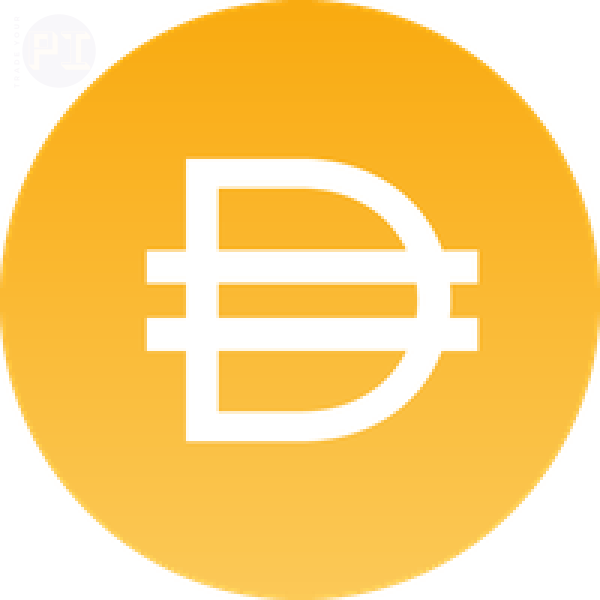π1
MultiversX
What is MultiversX?
Elrond is a distributed transactional computation protocol which relies on a sharded state architecture and a secure Proof of Stake consensus mechanism. While most other blockchain networks require custom hardware and high energy consumption, Elrond runs on average computers. By employing sharding, a method of parallelizing data & transactions processing, Elrond’s performance will scale up with the number of computers joining the network, reaching more than 100.000 transactions per second while growing increasingly decentralized. Elrond is built by a team of experienced entrepreneurs, engineers and researchers with significant blockchain backgrounds and technical experience at Microsoft, Google, Intel, and NTT DATA. The team includes two PhDs in CS & AI, multiple math, CS, and AI Olympiad champions, and a former member of the NEM core team.π1
Celestia
What is Celestia?
There's no description of Celestia yet. But chances are we will write a description for this coin in the future.π1
Lido DAO
What is Lido DAO Token?
Lido DAO is a community that builds liquid staking services for Ethereum. Lido allows users to earn staking rewards without locking assets or maintaining staking infrastructure. Lido aims to allow users to stake ether without losing the ability to trade or otherwise use their tokens. Lido will be a decentralized infrastructure for issuing a liquid token that is safer than exchange staking and has incredible flexibility compared to self-staking.π1
Kaspa
What is Kaspa?
Kaspa is a proof-of-work cryptocurrency that implements the GHOSTDAG protocol. GHOSTDAG does not orphan blocks created in parallel, rather allows them to coexist and orders them in consensus.π1
Render Token
What is Render Token?
The Render Network is the provider of decentralized GPU-based rendering solutions, the digital creation process. The project vision is to democraze the GPU cloud rendering.π1
VeChain
What is VeChain?
VeChain (VET) is a blockchain platform focussing on creating an ecosystem that can be used by enterprises for products and information. The ecosystem enables transparency and symmetrical information. The VeChain token is called VET and serves as fuel in the VeChain platform.The goal of VeChain
The project is built on top of the VeChainThor public blockchain and wants to build a trust-free and distributed business ecosystem, which is self-circulating and scalable. VeChain strives to provide resources to anyone who wants to solve real-world economic problems. The VeChain platform wants to create market transparency to authorized stakeholders, by providing a 360-degree view of information linked to a product and its business processes, like storage, transportation, and supply.Who started VeChain
In 2015, VeChain was founded by Sunny Lu, former CIO of Louis Vuitton China. The project started as a subsidiary of Bitse, one of China’s largest blockchain companies. Initially, the VEN token functioned on the Ethereum blockchain. VeChain transitioned onto its own blockchain and was rebranded in 2018. As part of the rebrand, the VEN blockchain became the VeChainThor (VET) blockchain.π1
NEAR
What is NEAR Protocol?
NEAR is a decentralized development platform built on top of the NEAR Protocol (smart contract blockchain platform), which is a public, developer-friendly, proof-of-stake blockchain. NEAR uses parallel processing to scale the network. This technique, known as sharding, resembles what ETH 2.0 is aiming to achieve and Near’s proof-of-stake consensus mechanism also allows token holders to stake their coins. NEAR is similar in principle to the “cloud-based” infrastructure that developers currently build applications on top of except the cloud is no longer controlled by a single company running a giant data center — that data center is actually made up of all the people around the world who are operating nodes of that decentralized network. Instead of a “company-operated cloud” it is a “community-operated cloud. NEAR is created by Alexander Skidanov and Illia Polosukhi in 2018. Shortly after meeting through the famous San Francisco-based y combinator startup accelerator program. Alex is a former Microsoft software developer and the former director of engineering at Memphis equals a company specializing in distributed databases. He also won a gold medal at the ICPC in 2008 an annual programming competition involving college students from around the world. Ilya is a former engineering manager of Google's acclaimed research division where he and his team of developers research deep learning and natural language technologies, which are now used in Google's translation services. He was also an ICPC finalist in 2008.π1
Stellar
What is Stellar?
Stellar is an open-source, decentralized payment protocol that allows fast, cross-border payments between any pair of currencies, at almost no cost. Its native asset, originally known as Stellar, was later called Lumens (XLM). XLM powers the Stellar network and all of its operations.The goal of Stellar
Stellar makes it possible to create, send, and trade digital representations of all forms of money: dollars, pesos, bitcoin, pretty much anything. It’s designed so all the world’s financial systems can work together on a single network. With this financial system they fight poverty and help develop individual potential. Stellar is useful and valuable because it is capable of hosting thousands of exchanges between currencies and tokens per second.Who started Stellar
In 2014, Jed McCaleb, founder of Mt. Gox and co-founder of Ripple, launched the network system Stellar with former lawyer Joyce Kim. The nonprofit Stellar Development Foundation was created in collaboration with Stripe CEO Patrick Collison, later in 2014. This foundation employs technologists, scientists, designers, and businesspeople, all dedicated to building a more inclusive global marketplace. Their goal is to unlock the world’s economic potential by making money more fluid and people more empowered.π1
Filecoin
What is Filecoin?
Filecoin (FIL) is a cryptocurrency used on the blockchain system called Filecoin. Filecoin is a decentralized storage network that turns cloud storage into an algorithmic market, designed to store humanity's most important information.π1
Hedera
What is Hedera?
Hedera Hashgraph is a distributed ledger system launched in 2017, using Hashgraph technology instead of a blockchain. It relies on Gossip about Gossip and virtual voting as a consensus mechanism, allowing all nodes to become aware of the message and predict when the nodes would vote, making the whole network more efficient. Hedera has four core features including consensus, HBAR token, smart contracts, and file storage. Compared to blockchain, Hedera Hashgraph claims to be more energy-efficient, faster, and more secure, with the backing of big brands like Google and Boeing. Its HBAR token helps run the network and can be staked using proxy staking.What is Ethereum Classic?
Ethereum Classic (ETC) is a decentralized smart contracts platform which is a continuation of the Ethereum blockchain. Ethereum Classic preserves original history, excluding external interference and altered transactions. Applications are run exactly as programmed without the possibility of censorship, downtime, or third-party interference. The distributed network consists of a blockchain ledger, native cryptocurrency, and robust ecosystem of on-chain applications and services.The goal of Ethereum Classic
The goal of the original project Ethereum was to expand the use cases for cryptocurrencies to applications beyond money. Ethereum enables developers to create new cryptocurrencies and decentralized applications running on top of its blockchain. Ethereum Classic aims to continue this vision. It differs from Ethereum in its technical decisions, made by the developers.Who started Ethereum Classic
It’s difficult to say who created Ethereum Classic. The developer most associated with the decision to continue maintaining the original Ethereum is the anonymous Arvicco. Some say, because much of this code is from the original Ethereum developers, that Ethereum’s founder Vitalik Buterin, and his team can be seen as the ones responsible for most of Ethereum Classic’s technical innovations.π1
Monero
What is Monero?
Monero (XMR) is a cryptocurrency which focuses on being untraceable and private. It differs from Bitcoin's in a few key ways, but is very similar to Bitcoin: it’s an anonymous version of Bitcoin. It can be used to buy and sell things, and be exchanged for other coins or tokens.The goal of Monero
The privacy features of Monero gives it its most value. No one can link Monero cryptocurrency transactions to a person. Monero is also created for its fungibility, all Monero coins are identical and mutually interchangeable. Monero has dynamic scalability, which means it has no “pre-set” block size limit. Monero has ASIC resistance and multiple keys.Who started Monero
Bytecoin, launched in 2012, was the precursor of Monero. It was the first digital currency that was written using a technology called CryptoNote. CryptoNote is the spine of most of the privacy-based cryptocurrencies that exist, including Monero. However, there were a few issues with Bytecoin, which lead to a group of seven developers to fork the Bytecoin blockchain. The new currency would be known as Bitmonero, later named Monero. Five of the seven developers decided to stay anonymous. Only two of these Monero developers are known: Riccardo Spagni and David Latapie.π1
Toncoin
What is Toncoin?
TON is designed in 2018 by the Durov brothers, the founders of Telegram Messenger. Later, it was handed over to open TON Community, which has been supporting and developing. The project was designed for lightning-fast transactions.π1
WEMIX
What is WEMIX Token?
WEMIX is a token for the WEMIX platform. It is a play-to-earn game platform. The token can be traded, win or craft NFT within game users.What is Injective Protocol?
Limitless trading on the first fully Decentralized Exchange. Injective Protocol is universal DeFi protocol for cross-chain derivatives trading across a plethora of financial products that enables anyone to create and trade on markets of their choice permissiolessly while being able to earn liquidity mining rewards for network participation. As well as being incubated by Binance Labs, Injective Protocol is also backed with $3 million in funding from noted blockchain investors Pantera, Hashed and others. Injective gives you the freedom to create and trade on any derivatives market of your choosing. Earn cross-chain yield on Ethereum, Cosmos and other decentralized networks. What problem does Injective solve? Injective brings power back to the people by enabling truly free and decentralized trading for everyone. How is Injective Different? Pioneering a new decentralized economy. The biggest fundamental difference between Injective Protocol and other exchanges is that we make exchange a decentralized public utility which gives their users and community the resultant value capture from their exchange protocol. Injective technology brings an order of magnitude speedup by scaling trade execution and settlement on layer- 2 all while being fully decentralized.Injective’s fully decentralized nature uniquely allows individuals to permissionlessly create and trade derivative markets that even centralized exchanges cannot support.π1
















